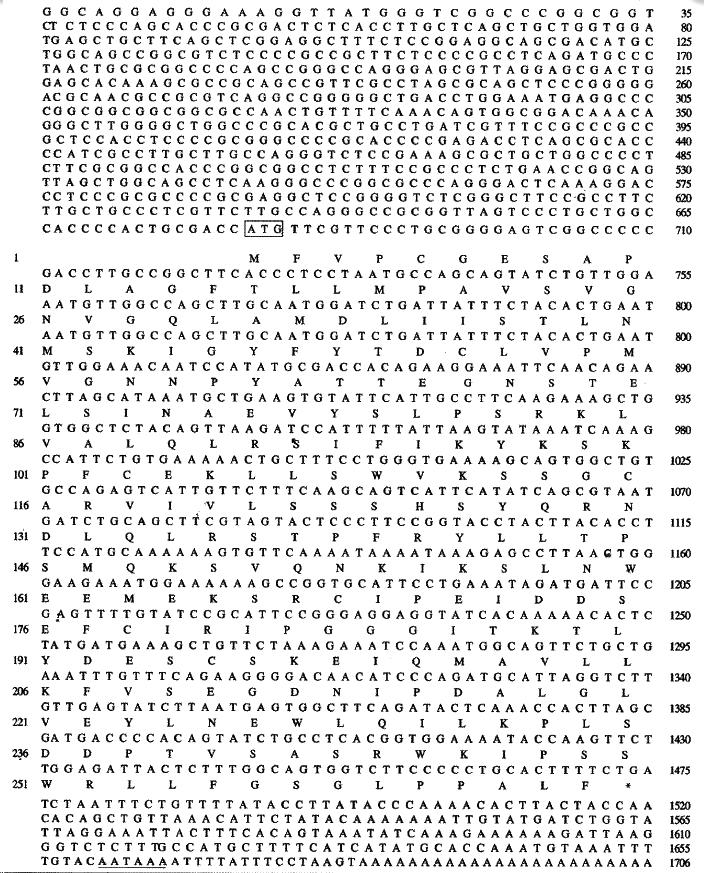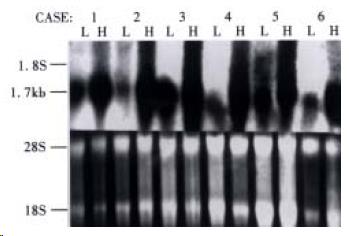Copyright
©The Author(s) 2001.
World J Gastroenterol. Dec 15, 2001; 7(6): 821-825
Published online Dec 15, 2001. doi: 10.3748/wjg.v7.i6.821
Published online Dec 15, 2001. doi: 10.3748/wjg.v7.i6.821
Figure 1 Nucleotide sequence and predicted amino acid sequence of HCCA3.
HCCA3 nucleotide sequence (1706 bp) and deduced amino acid sequence (264 amino acid). The franking sequence of the predicted initiating methionine which satisfied the Kozak criterion is shown in the box. A consensus polyadenylation signal sequence (AATAAA) beginning 16 bases upstreams the poly (A) tail shown in black line. The asterisk indicates the stop codon. EMBL/GenBankTM/DDBJ accession number is AF276707.
Figure 2 Northern blot analysis of HCCA3 mRNA in human adult normal tissues.
Upper panel showed HCCA3 mRNA was highly expressed in human lungs, brain and colon, moderately expressed in muscle, stomach, spleen and heart tissues, weakly expressed in small intestines, pancreas, and liver tissues. Equal a mounts of total RNA loading as indicated by re-hybridizing with (-actin cDNA probe (lower panel).
Figure 3 Differential expression of HCCA3 analyzed by Northern blot.
Upper panel shows that HCCA3 mRNA was highly expressed in HCC tissues (H), and lowly in paired surrounding liver tissues (L). A signal transcript of 1.7 kb is shown in six tumors. 28 S and 18 S rRNAs were used for evaluating the quality and quantity of RNA loading (lower panel).
- Citation: Wang ZX, Hu GF, Wang HY, Wu MC. Expression of liver cancer associated gene HCCA3. World J Gastroenterol 2001; 7(6): 821-825
- URL: https://www.wjgnet.com/1007-9327/full/v7/i6/821.htm
- DOI: https://dx.doi.org/10.3748/wjg.v7.i6.821











